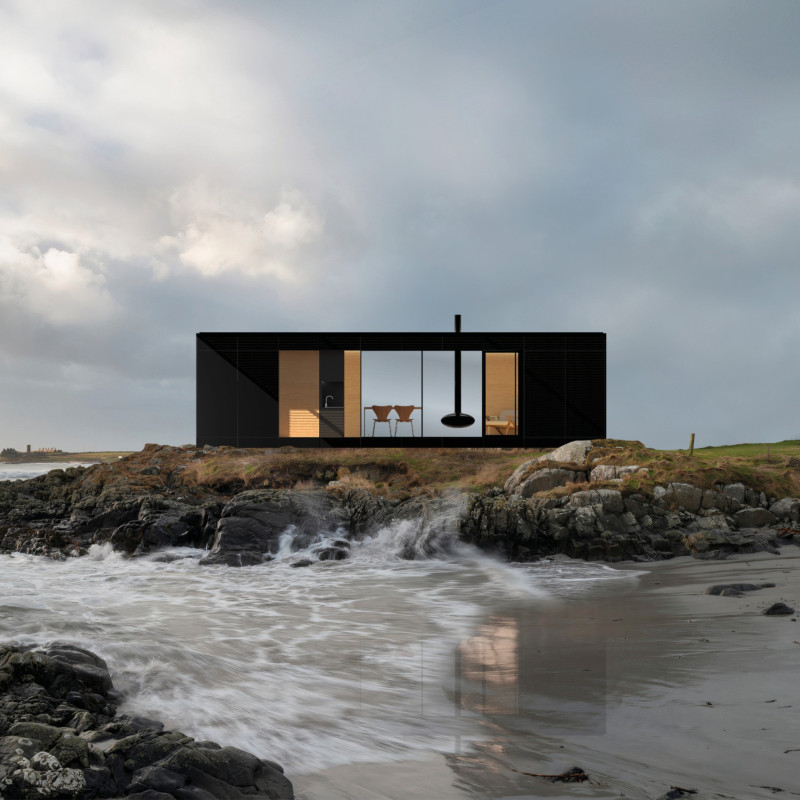5 key facts about this project
The design serves various functions, catering to both private and communal activities. This dual-purpose approach enhances its versatility, appealing to a broad audience by facilitating diverse uses, from quiet contemplation to engaging social interactions. The layout showcases an intuitive arrangement of spaces that flow seamlessly into one another, contributing to an overall sense of coherence and unity in the design.
Important aspects of this project include its thoughtful integration of outdoor and indoor environments. Large windows and strategically placed openings allow for ample natural light, creating a vibrant atmosphere throughout the building. This connection to the outdoors is not just aesthetic; it serves to enhance the occupants’ well-being, promoting a sense of openness and tranquility, which is integral to the success of the design.
The materiality of the building is particularly noteworthy, consisting of a selection of durable and environmentally conscious materials that not only meet performance expectations but also contribute to the visual narrative of the architecture. The primary materials used include locally sourced timber, which adds warmth and texture to the overall aesthetic, and precast concrete, selected for its structural integrity and versatility. Glass is used extensively to minimize barriers between interior spaces and nature, while also modernizing the façade. Sustainable practices are prioritized throughout the construction process, underscoring the project’s commitment to environmental stewardship.
A distinctive feature of this architectural design is its unique roof structure, which serves both functional and expressive purposes. The roof design incorporates overhangs that help control sunlight and create shaded outdoor areas, promoting energy efficiency while also providing inviting spaces for occupants to enjoy. This not only enhances the building's performance but also expands its usability, demonstrating how architectural solutions can address multiple challenges simultaneously.
The landscape surrounding the building complements the architectural design, further enhancing the overall experience. Thoughtfully designed pedestrian walkways and green spaces encourage outdoor engagement and foster a sense of community. The landscaping considers native vegetation, which minimizes water usage and supports local biodiversity.
Furthermore, the project embraces advanced building technology through the integration of smart systems that enhance energy efficiency and occupant comfort. These include automated lighting, climate control systems, and low-flow plumbing fixtures, designed to reduce ecological impact while providing a modern living experience.
Overall, the architectural project exemplifies a commitment to contemporary design principles while respecting natural surroundings and community needs. This thoughtful fusion of aesthetics, functionality, and sustainability positions the project as a benchmark for future architectural endeavors. For those interested in exploring the finer aspects of this remarkable work, a review of the architectural plans, architectural sections, and other architectural designs will provide deeper insights into the innovative ideas and design processes that shaped this project.


 Lorenzo Bavelloni
Lorenzo Bavelloni 























